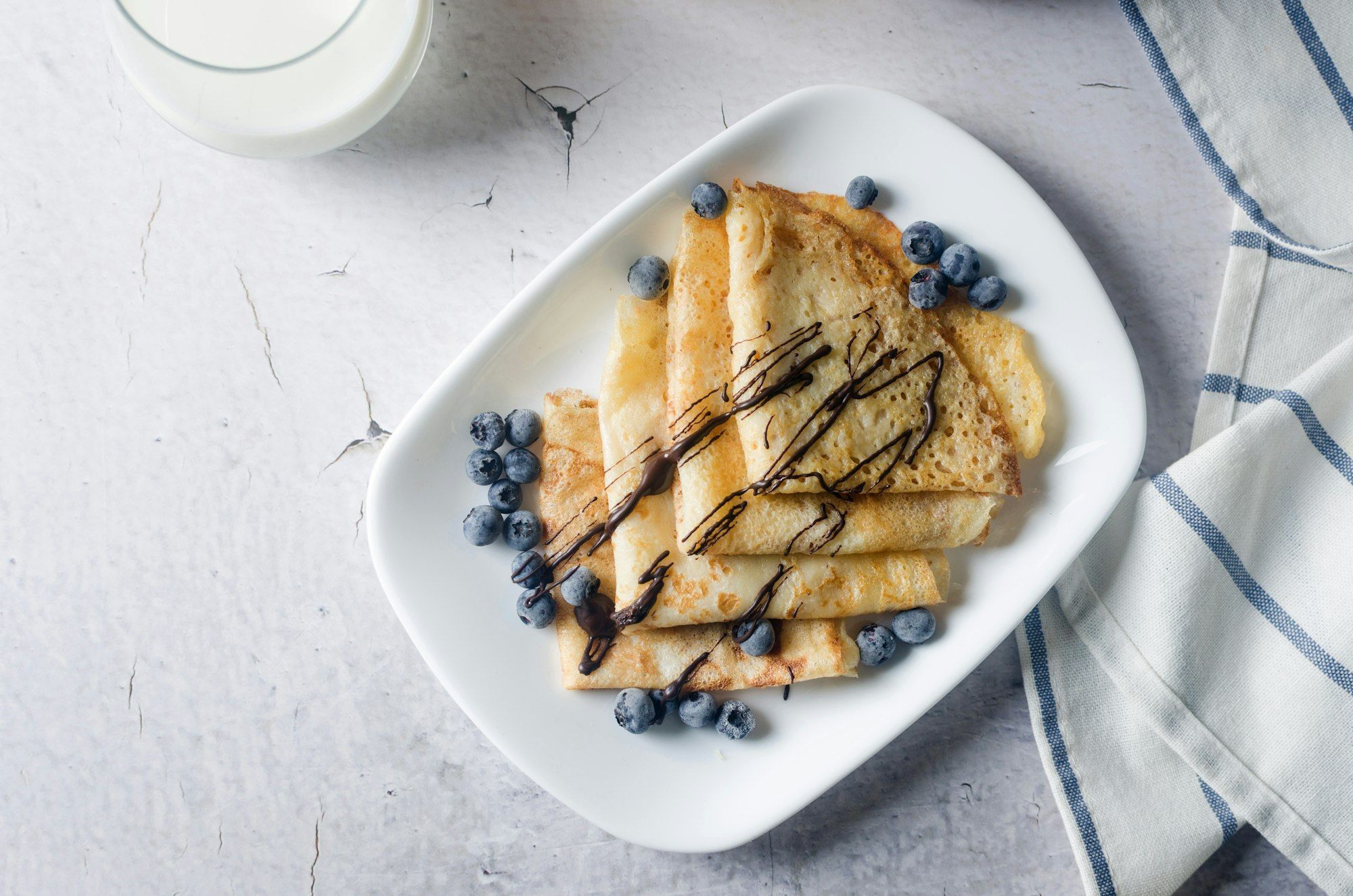Revolutionize Your Cooking: The Impact of Non-Stick Cookware on Fat Intake at Home
The Rise of Non-Stick Cookware: A Healthier Cooking Option
In the world of cooking, the choice of cookware can significantly impact not only the taste and texture of your food but also your health. One of the most popular and health-conscious options available today is non-stick cookware. This type of cookware has revolutionized the way we cook, making it easier to prepare meals with less oil and butter, which in turn can help reduce your fat intake.
Non-stick cookware, particularly ceramic non-stick pans, has emerged as a favorite among health-conscious cooks. Unlike traditional non-stick options that may contain harmful chemicals like PTFE and PFOA, ceramic pans are made from natural materials and are free of toxic substances. For instance, GreenLife’s ceramic pans use a Thermolon™ non-stick coating that is free from PFAS, PFOA, lead, and cadmium, making them safe for you and your family.
Topic to read : Revolutionize your refrigerator: the ultimate guide to smart nutrition tracking for a sustainable lean diet!
Health Benefits of Using Non-Stick Cookware
Using non-stick cookware can have several health benefits, especially when it comes to reducing fat intake.
Less Oil and Butter
One of the primary advantages of non-stick cookware is its ability to cook food with minimal oil or butter. This is particularly beneficial for those looking to reduce their saturated fat intake. Ceramic pans, for example, provide a naturally non-stick surface that allows food to release easily, making it possible to cook healthier meals with less fat. Whether you’re sautéing vegetables, frying eggs, or cooking chicken, non-stick pans ensure that your food is cooked perfectly without the need for excessive oil or butter.
Also to discover : Revolutionize your refrigerator: the ultimate guide to smart nutrition tracking for a sustainable lean diet!
Non-Toxic Cooking
Traditional non-stick coatings often contain harmful chemicals that can leach into your food when heated. In contrast, ceramic non-stick cookware is free from these toxins, ensuring that your meals are prepared safely and healthily. This non-toxic nature of ceramic pans makes them an excellent choice for families who prioritize health and safety in their cooking.
Easy Cleanup
Non-stick cookware also makes cleanup a breeze, which can be a significant motivator for maintaining healthy cooking habits. With ceramic pans, most messes can be wiped away with a simple rinse and a drop of soap, reducing the likelihood of using harsh chemicals or excessive water. This ease of cleaning encourages more frequent use of these pans, leading to a healthier cooking routine.
How Non-Stick Cookware Compares to Other Options
When considering cookware, it’s essential to compare the different types available to understand which one best suits your needs.
Non-Stick vs. Stainless Steel
Stainless steel pans are known for their durability and ability to brown and sear foods well. However, they are not inherently non-stick, which means foods may stick more easily unless proper techniques are used, such as preheating the pan and using sufficient oil. In contrast, non-stick pans, especially ceramic ones, offer excellent non-stick capabilities without the need for additional oil or butter.
| Cookware Type | Non-Stick Properties | Health Benefits | Ease of Cleanup | Durability |
|---|---|---|---|---|
| Ceramic Non-Stick | Excellent non-stick surface | Non-toxic, less oil/butter | Very easy | Good |
| Stainless Steel | Not inherently non-stick | No toxins, but may require more oil | Moderate | High |
| Cast Iron | Not non-stick unless seasoned | Healthy, but requires maintenance | Difficult | Very High |
Non-Stick vs. Cast Iron
Cast iron pans are another popular option for cooking, known for their durability and heat retention. However, they require seasoning to achieve a non-stick surface, which can be time-consuming and may not be as effective as ceramic non-stick pans. While cast iron pans are healthy and can be used for a variety of cooking techniques, they do not offer the same level of convenience and ease of use as non-stick cookware.
Practical Tips for Using Non-Stick Cookware
To get the most out of your non-stick cookware and maintain its health benefits, here are some practical tips:
Preheating and Cooking
Preheating your non-stick pan is crucial to ensure that food does not stick. Use medium heat and let the pan heat up for a few minutes before adding your food. This helps in achieving the “Leidenfrost effect,” where the food cooks evenly without sticking to the pan.
Cleaning and Maintenance
Cleaning non-stick pans is relatively easy, but it’s important to do it correctly to maintain the non-stick coating. Avoid using abrasive cleaners or scouring pads, and instead, use a soft sponge and mild soap. For tougher stains, a Mr. Clean eraser can be very effective, as noted by a satisfied user of GreenLife’s ceramic pans.
Avoiding High Heat
Non-stick pans should not be exposed to high heat, as this can damage the non-stick coating. For ceramic pans, it’s recommended to use medium heat and avoid heating the pan above 350°F (175°C). This ensures that the coating remains intact and continues to provide excellent non-stick performance.
Eco-Friendly Aspects of Non-Stick Cookware
In addition to the health benefits, many non-stick cookware brands are now focusing on eco-friendly practices.
GreenLife’s Commitment
GreenLife, for example, uses a ceramic non-stick coating that starts with sand and creates 60% less CO2 emissions during the curing phase than traditional coatings. Their pans are also crafted with recycled aluminum, reflecting a commitment to sustainability and environmental responsibility.
Xtrema’s Eco-Friendly Practices
Xtrema is another brand that prioritizes environmental responsibility. Their manufacturing processes are designed to be as kind to the planet as they are to your health, making them a great choice for those who want to cook healthily while also supporting eco-friendly practices.
Real-Life Examples and User Experiences
To understand the real impact of non-stick cookware on fat intake and overall cooking experience, let’s look at some user experiences.
A Health-Conscious Cook’s Experience
One user of GreenLife’s Soft Grip Healthy Ceramic Nonstick Cookware set shared their positive experience: “I love how solid they are. I love how well the lids fit and how you can see through to check the food. I love how all handles are covered with an almost rubbery material that makes them easy to grip and heat-free.” This user also appreciated the ease of cleaning and the fact that they could cook healthier meals with minimal oil.
Cooking with Less Oil
Another user highlighted the benefit of using less oil: “I try to eat healthy, and these pans are perfect for that. Great for veggie and chicken stir-fries and the like. Also great for frozen family-sized dinners with pasta.” This user found that the pans cooked evenly and required lower heat, which helped in preventing food from burning and sticking.: Making the Right Choice for Your Health
When it comes to choosing cookware that aligns with your health goals, non-stick cookware, especially ceramic non-stick pans, stands out as an excellent option. Here are some key takeaways:
- Healthier Cooking: Non-stick cookware allows for healthier cooking with minimal oil or butter, reducing your fat intake.
- Non-Toxic: Ceramic non-stick coatings are free from harmful chemicals, ensuring safe and healthy meal preparation.
- Easy Cleanup: Non-stick pans are a breeze to clean, encouraging more frequent use and a healthier cooking routine.
- Eco-Friendly: Many brands now offer eco-friendly non-stick cookware options that are kind to both your health and the environment.
By choosing non-stick cookware, you’re not just investing in your kitchen; you’re making a healthier choice for you and your family. So, the next time you’re in the market for new cookware, consider the benefits of non-stick pans and how they can revolutionize your cooking to make it healthier, easier, and more enjoyable.






